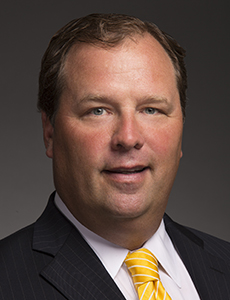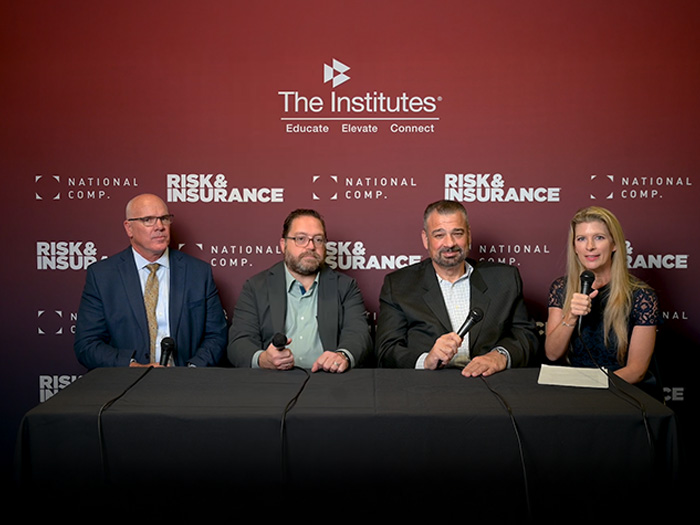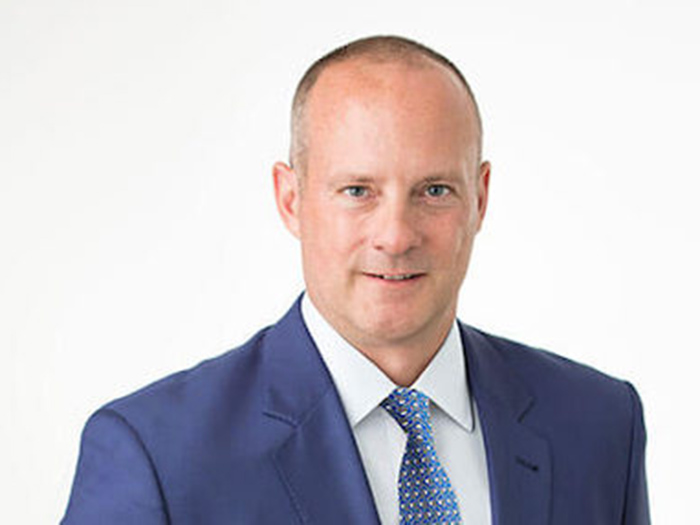4 Maddening Global Insurance Challenges and the Expert Solutions to Solve Them

According to industry research conducted by The Hartford, roughly 80% of U.S. companies have some type of international exposure, but 45% reported their broker never talked to them about international risk.
That statistic underlies what The Hartford’s head of multinational insurance Alfred Bergbauer says is the single greatest challenge in building and managing a global insurance program — lack of global risk awareness.
Multinational companies’ incomplete appreciation of their risk is not altogether surprising given the complexity of running a business that spans continents and cultures. As a result, “most U.S. companies are uninsured, underinsured or improperly insured for international risks,” Bergbauer said.
The onus is on carriers to educate brokers and clients about their multinational exposure and to spearhead the complicated process of constructing a global insurance program.
Covering operations in multiple countries demands understanding the interconnectedness of risks across geographies, complying with multiple sets of rules and regulations, managing both global and local teams of underwriters, brokers and service providers — all while striving to deliver transparency and a consistently excellent level of customer service.
Technology increasingly helps carriers execute these tasks, but a program’s success ultimately depends on the expertise of the people behind it. Here are the key challenges of building and managing a global insurance program, and the approaches carriers are taking to solve them.
Challenge 1: Gathering Accurate Information
As in domestic programs, underwriters need data to build accurate policies. With multinational programs, the volume of data needed is both greater and more difficult to capture.
While a good chunk of exposure data comes directly from the client, it must be supplemented with information from third party databases, industry-specific benchmarks and additional research on the part of the carrier.
For physical risks, that could include something as simple as comparing the insured’s locations to geographical hazard guides to determine exposure to flooding or severe weather. For regulatory risks, finding up-to-date information is more challenging as rules can shift from day to day.
Solution: Tapping into Local Resources
The most straightforward way to obtain this data is by relying on local network partners that have first-hand knowledge of a country’s legal nuances. This of course assumes that multinational carriers have cultivated a network of reputable firms with demonstrated track records of compliance.
For faster and sometimes more complete information, insurers also turn to website scraping.
“In addition to our own network, we are also relying on large information providers that are best equipped through technology like web scraping to sift through the changes and updates being published on local websites,” said Sonja Ochsenkuehn, head of global programs, AXA XL.
“You have to do your due diligence,” Bergbauer added. “Sometimes that means seeking information in creative and innovative ways.”
Challenge 2: Organization and Program Management
Finalizing a program involves a lot of steps. All parties must agree on premium allocation — the percentages of premium that stay in a local country or come back to the U.S. Instructions for local policy issuance must be communicated to local network partners and confirmed. Processes for invoicing, payment and claim status tracking must be established.
Ticking off the checklist is an administrative beast requiring coordination of global carrier and broker, local carriers and brokers, a central contact at the client company and representatives at local sites. There’s a lot of back-and-forth and documentation to track.
“You need to be able to see who’s doing what,” said Sylvain Bouteillé, managing director, global co-head primary lead initiative at Swiss Re Corporate Solutions.
If contract certainty is a requirement, it takes significant advance planning, the burden of which falls on the global carrier to execute.
“Contract certainty is particularly difficult with multinational insurance because of all these moving parts, but it comes down to effective program management. The carrier or broker should manage all activities from end to end, leading preparation and collaboration of all parties from start to finish,” said Ryan Gustafson, North America head of multinational, AIG.
“If you want implementation and policy issuance completed by inception, lay out all of the timelines and responsibilities required to get there.”
(Potential) Solution: Blockchain
Blockchain may eventually find a place in this arena. Because it organizes processes in a linear fashion, requires all stakeholders’ approval before linking another “block” to the chain, and serves as a repository for critical documents, blockchain shows a lot of potential as a tool that almost forces collaboration and transparency.
“There are a number of things that could be addressed with blockchain,” Ochsenkuehn said.
“Obtaining information in the pre-bind phase; getting timely agreement on what the premium allocation should be by local country; communicating instructions to the network; the cash collection process are all common pain points in the global program process.”
“Contract certainty is particularly difficult with multinational insurance because of all these moving parts, but it comes down to effective program management. The carrier or broker should manage all activities from end to end, leading preparation and collaboration of all parties from start to finish.” — Ryan Gustafson, North America head of multinational, AIG
AIG successfully piloted the first “smart” multinational policy using blockchain in 2017 for Britain-based global bank Standard Chartered. A controlled master policy and three local policies were incorporated in the blockchain, allowing the insurer, client and broker access to a real-time view of data input documentation updates.
According to a press release announcing the pilot, “this allows visibility into coverage and premium payment at the local and master level as well as automated notifications to network participants following payment events.”
Insurers are still in the early stages of determining how best to implement blockchain to organize and streamline processes, especially as the technology continues to evolve, but it seems likely it will eventually serve a greater purpose in multinational insurance.
For now, program management depends on organizational skill and clear communication channels.
Challenge 3: Transparent Communication and Quick Customer Service
Clear, proactive communication and transparency are key to keep everyone on the same page and moving forward. A multinational program requires many moving parts working together, and if one of those moving parts is not communicating, things can quickly go awry.
Questions or concerns from local parties are inevitable, and these constituents need to know how to communicate with the central insurer in order for a master program to run smoothly.

Gillian Gunnink, SVP, strategy and client engagement leader, international business, Swiss Re Corporate Solutions
“Let’s say a central U.S. broker sends out policy instructions to a local contact in Germany, and that contact believes there should be some other coverage that’s missing. If they only communicate that at the local level, the central components of that program aren’t getting involved to solve it,” said Gillian Gunnink, SVP, Strategy and client engagement leader, international business at Swiss Re Corporate Solutions.
“That disgruntled local customer may feel they can place the program better with the local broker across the street,” she said.
“If you don’t have the transparency and quick communication needed to resolve that issue, what was a small concern ends up dismantling a part of the program.”
Laura Vest, senior vice president, Chubb Global Casualty, said, “The best way to create this transparency is through utilization of technology. I think that everyone is trying to work towards that. It’s a simple concept but difficult to do well.”
Solution: Legacy-Free Platforms
The most common solution to the transparency challenge is a customer portal that gives every party a holistic, real-time view of their program and a centralized method of communication. Every carrier has their own version, but two unifying factors are the absence of a legacy system and consistency across locations.
Swiss Re Corporate Solutions made an intentional decision to build their multinational platform from scratch in order to avoid the siloes common in older systems.
“Without siloes throughout different divisions or departments or countries, we were able to put in a fully integrated platform which to my mind is a huge game changer,” Bouteillé said.
“It gives the customer the ability to see from beginning to end where all the parts of the puzzle are.”
Ditching a legacy platform also enables speed and agility — critical to the delivery of excellent customer service. “When we have conversations with other stakeholders, we can act on their feedback quickly, and that’s mostly due to the lack of a legacy system,” Gunnink said.
Creating a consistent customer experience around the globe also streamlines communication. Chubb, for example, requires all of its network partners — whether they are owned entities or third parties — to use its Worldview platform in order to reduce the likelihood of error and minimize confusion.
Challenge 4: Navigating A Continually Changing Regulatory Environment
A decade ago, one controlled master policy may have been sufficient to cover a company’s risks anywhere in the world. But as the world became more interconnected and business more globalized, local governments were quick to realize that allowing foreign countries to be covered by unlicensed insurers was robbing their countries of local investment and tax revenue.
Today, there are very few countries that do not require licensed, locally admitted policies, and regulators around the world are cracking down on enforcement. Audits are conducted more frequently. Regulators are entering into bilateral and multilateral agreements, working together to identify unlicensed insurers.
The consequences for an alien insurer are severe. In addition to large fines and penalties, the global insurer and broker both can sustain significant reputational damage. The insureds property can be seized and its operations suspended. Any claim payments they receive may be taxed as income — cutting their reimbursement by at least 20%.
Tracking regulatory changes around the world is a monumental task, and it’s only grown more complicated in today’s uncertain political environment.
“As you see more protectionism, governments are changing how they allow you to do business in their country. For example, several are increasing the requirement for how much premium has to stay in their jurisdiction,” said Chubb’s Vest.
“Countries are adopting different tax schemes, and they’re becoming more aggressive in how they establish and enforce their monitoring of premium paid locally.”
The most frequent and dramatic regulatory changes occur in emerging markets.
“Local controls are being strengthened in less mature markets like the Middle East, Africa and Vietnam,” Ochsenkuehn said.
“These environments change more fluidly. And staying on top of these changes and managing their impact on the client is critical.”
Solution: Real Time Reporting and Databases
According to Bergbauer, “There is nothing more powerful than the input of local partners to track regulatory changes globally.”
Their feedback, combined with information gleaned from claims data and data scraping technology, helps to generate a real-time view of regulatory changes. But carriers still need a central system that can house, sort and continually update this information.
“As you see more protectionism, governments are changing how they allow you to do business in their country. For example, several are increasing the requirement for how much premium has to stay in their jurisdiction.” — Laura Vest, senior vice president, Chubb Global Casualty
The Hartford’s in-house country guide is one example. The database details attributes like local underwriting environment, market characteristics and insights on local legal systems. Chubb’s Worldview platform distills local requirements on a country-by-country basis.
“If a client is interested in sending people to France or acquiring a company there, they can go to our portal and look up France. It will tell you exactly what the requirements and expectations are for that country. So a client can be well-prepared before they make that decision,” said Matt Merna, division president of North America major accounts, Chubb.
“In order to issue policies locally and compliantly, we have to constantly update a database of over 1 million data points. What worked well last year may not work well this year,” said Gustafson.
AIG’s database takes a more global view of client regulatory risk: “It takes those million data points, looks at a specific client and creates a bespoke client brief which displays a heat map showing unique program requirements in each jurisdiction,” Gustafson said.
Expertise Remains Central to Success
The pool of carriers and brokers that can execute a multinational program well is relatively small, and that’s because even the best methodologies and technologies can’t deliver without the foundation of ample talent, resources and financial strength.
“It gets complex, and you have to have experience and the global network to manage that. We have 150 people who only service U.S.-based multinational accounts for us, and more than 625 offices around the globe that we can access for local information. It’s a huge investment, and that’s what it takes,” Merna said.
“It starts with a CEO backed by a board that understands the nuance and subtlety of a global business and is committed to serving clients. It has to come from the top down, you have to have a global risk mindset across all your teams (underwriting, legal, regulatory, compliance and operations) and the internal consultative capabilities to offer insight to clients and broker,” Bergbauer said.
“Otherwise, you’re just dabbling.” &












